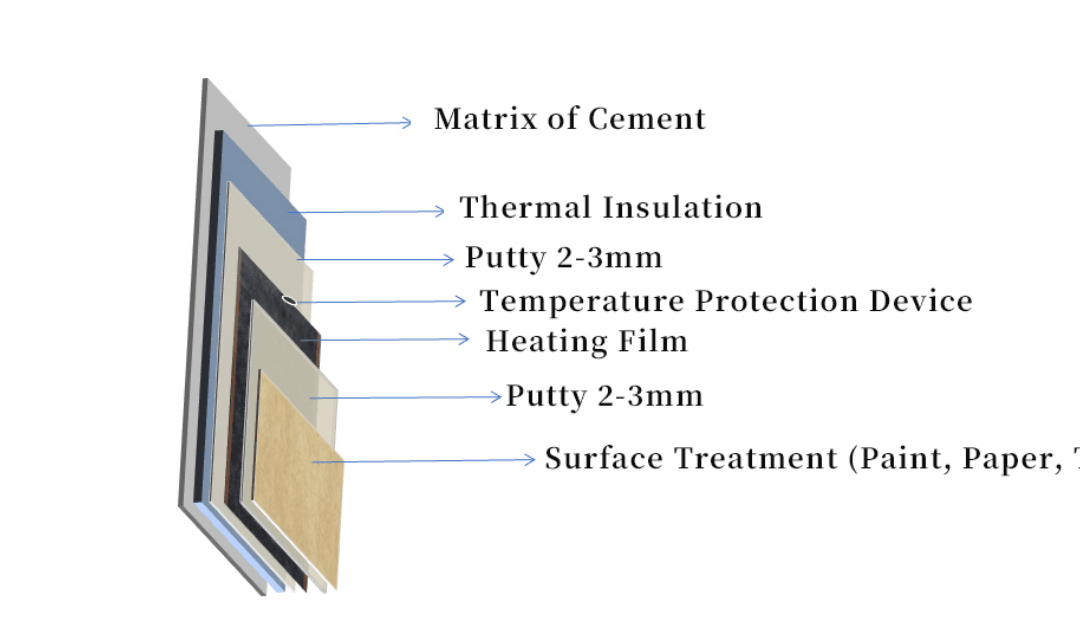Why Do Current Heating Solutions Use So Much Energy?
In order to save on one’s energy bill the most important thing is to maximize the efficiency of the heating system. A common and effective method for accomplishing this is by increasing the overall insulative quality of the space being heated. In this way the amount of heat that is lost over a period is reduced and the relative “effectiveness” of the heating solution is increased thereby reducing the total amount of heat needed to be generated over a set period of time. However, there is also another aspect that is constantly overlooked and that is the location where the heat is being generated!
Heat Transportation=Heat Loss
Traditional Heating solutions such as Gas/Oil Boilers and Heat Pumps all generate heat far from the location where that heat will actually be used! With the boilers often being in one’s basement and the heat pumps being located outside the house. This distance means that the generated heat has to be transported to the location where it is needed. Now heat always flows along gradients, this means that if there is a temperature difference between the heat in say a pipe and the surrounding air or ground then a portion of that heat will always move from the hotter location to the colder location. This can lead to a lot of wasted energy! The rate of this movement is determined by the size of the temperature difference and the thermal conductivity of the materials separating the two temperature zones.
This movement of heat is also a constant pressure! So the longer the distance that the heat has to travel to get to where it is needed then the more heat is actually “wasted”, in turn increasing the total amount of heat that needs to be generated to make your space comfortable, increasing energy bills!
Generate The Heat Where It Is Needed!
So what can be done? One important step is to be sure to design a heating solution in such a way as the minimize the distance from the source of heat generation (the heating element) to where the heat is actually needed (the room).
For this purpose, solutions such as our full surface electrical heating films are ideal. These films themselves have 99.8% efficiency of converting electricity into heat and since these films are generally installed 2-5mm from the surface on wall/ceilings and 5-15mm from the surface for flooring they are extremely close to where the heat is actually needed.
So when compared to heating solutions which generate the required heat outside of the room and transport it into the room there is a lot less wasted heat! Additionally, through making sure that the films are always installed with an insulative material behind them their efficiency is increased even more. But by how much? Ultimately that will always depend on the specific situations of the house, but we’ve seen that on average our full surface carbon fiber heating films are able to save our customers at least 30% on their energy bills when compared to traditional heating solutions!
That energy saving is also not taking into consideration the possibility of zoned heating. Thanks to being so close to the surface our heating solutions have an incredibly fast reaction time. They only take up to 9 minutes to reach their maximum surface temperatures (50-55C for wall/ceiling and 30C for flooring) and only require up to 30 minutes to bring a room from 12C to a warm and comfortable 22-24C. This in combination with a smart control system means you can easily design the solution to turn on right before you get home or only when you need it. This drastically cuts down your energy usage when compared with slow reacting solutions such as underfloor water heating that require near constant usage to maintain a comfortable living environment.
We all want to reduce our energy consumptions, whether it be to reduce our carbon footprints or save on our energy bills. To accomplish this optimizing ones heating solution to have as little wasted energy as possible while maximizing comfort is critical. So let’s move away from traditional inefficient heating solutions and instead turn to quick, close to surface, reactive, heating solutions that allow us all to Put Heat Where You Need It!

